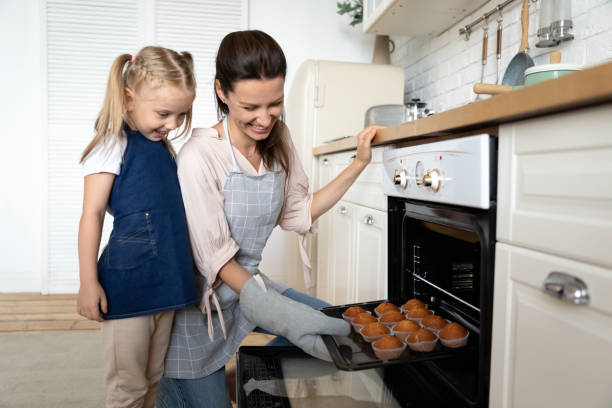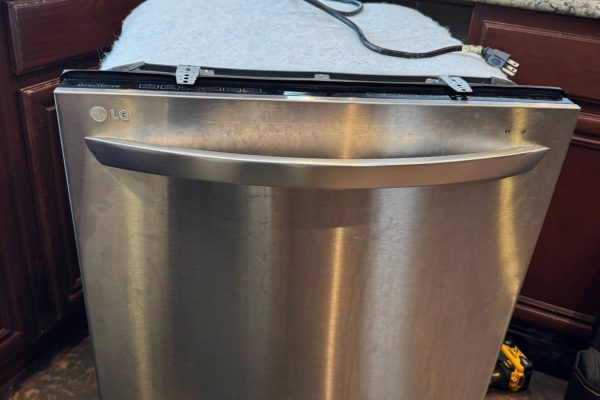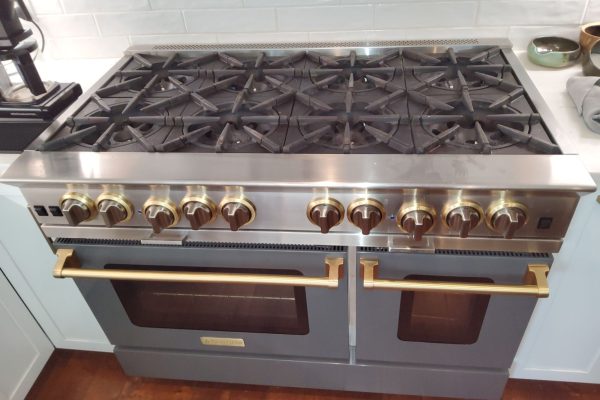The kitchen, often hailed as the heart of a home, is a space where culinary creations come to life. The oven, a central player in this gastronomic theater, provides the stage for roasts, baked goods, and countless other delicacies. However, a frustrating issue can arise when the oven fails to hold its temperature after being switched off. In this article, we explore the potential causes behind this culinary mystery and discuss possible solutions.
Thermal Retention and Radiant Heat: The Basics
Understanding the dynamics of oven temperature is crucial in unraveling the mystery of post-switch-off fluctuations. Ovens are designed to provide a stable and uniform temperature during operation, ensuring that food cooks evenly. When you switch off the oven, thermal retention comes into play.
Thermal retention refers to the oven’s ability to retain heat even after being turned off. This is a natural phenomenon due to the thermal mass of the oven’s walls and heating elements. Additionally, radiant heat continues to emanate from these surfaces after the heating elements have been deactivated.
Common Causes of Temperature Fluctuations
Poor Insulation:
Inadequate insulation is a common culprit when ovens struggle to maintain a consistent temperature. Insulation serves as a barrier, preventing heat from escaping and maintaining the desired temperature. If the insulation is compromised or insufficient, the oven may lose heat rapidly after being turned off.
Faulty Door Seal:
The integrity of the oven’s door seal is vital for temperature control. A damaged or worn-out seal allows heat to escape, leading to temperature fluctuations. Inspect the door seal for any signs of wear, tears, or misalignment, and replace it if necessary.
Thermostat Issues:
The thermostat is the temperature control center of the oven. If it malfunctions, it can result in erratic temperature behavior. A faulty thermostat may inaccurately gauge the oven’s temperature, leading to uneven heating or rapid cooling after being turned off.
Heat Distribution Problems:
Uneven heat distribution within the oven cavity can cause temperature variations. This could be due to malfunctioning fans, heating elements, or convection systems. When the heat is not distributed evenly during operation, certain areas may cool faster than others after the oven is switched off.
Overloading:
Overcrowding the oven with too many dishes can hinder proper air circulation, leading to uneven temperature retention. An overloaded oven may struggle to maintain a consistent temperature after being turned off.
Electronic Control Issues:
Modern ovens often have electronic controls that manage temperature settings. If there’s a glitch in the electronic control system, the oven may not respond accurately to temperature adjustments, resulting in post-switch-off temperature fluctuations.
Troubleshooting and Solutions
Check Oven Insulation:
Examine the insulation around the oven. If it appears damaged or insufficient, consider replacing it. Adequate insulation helps the oven retain heat for a more extended period after switching off.
Inspect the Door Seal:
Ensure that the door seal is intact and properly aligned. If there are any signs of wear or damage, replace the seal. A tight and well-functioning door seal is crucial for maintaining temperature consistency.
Calibrate the Thermostat:
If you suspect thermostat issues, it may need calibration. Consult your oven’s user manual for instructions on how to recalibrate the thermostat or seek professional assistance if required.
Evaluate Heat Distribution:
Run the oven and observe the distribution of heat during operation. If you notice uneven heating, it could be indicative of fan, heating element, or convection system issues. Professional inspection and repairs may be necessary.
Avoid Overloading:
Practice mindful cooking by avoiding overloading the oven. Ensure proper air circulation to maintain consistent temperatures. Cooking in batches may be necessary for large quantities.
Test Electronic Controls:
If your oven has electronic controls, run diagnostic tests to ensure they are functioning correctly. Check for error codes or unusual behavior. Resetting the controls or seeking professional assistance may be required if issues persist.
Preventive Maintenance Tips
Regular Cleaning:
Keep the oven clean, both inside and outside. Accumulated grease and debris can affect the oven’s performance and contribute to temperature fluctuations.
Routine Inspections:
Periodically inspect the oven for signs of wear, especially the door seal and insulation. Early detection of issues allows for timely repairs.
Careful Door Usage:
Handle the oven door with care to avoid damage to the door seal. Slamming or forcefully closing the door can compromise its integrity.
Follow Manufacturer Guidelines:
Adhere to the manufacturer’s guidelines for usage, cleaning, and maintenance. Following recommended practices helps extend the lifespan of your oven.
Professional Maintenance:
Schedule professional maintenance checks at regular intervals. A qualified technician can perform comprehensive inspections, identify potential issues, and conduct preventive measures to ensure optimal oven performance.
In conclusion, when your oven fails to hold its temperature after being switched off, a systematic approach to troubleshooting can unveil the root causes. Whether it’s poor insulation, a faulty thermostat, or issues with heat distribution, addressing these concerns promptly ensures that your oven remains a reliable ally in your culinary adventures. By incorporating preventive maintenance practices and being attentive to signs of wear, you can uphold the efficiency and longevity of your oven, creating a kitchen where temperature control is as precise as your favorite recipe demands.
Our services are your reliable way to solve problems with household appliances! If your appliances require repair, don’t worry – contact Oceanside Appliance Service Center and we will help you forget about any inconvenience.
Our company has many years of experience in repairing household appliances of various brands and models. Our team of highly qualified technicians has deep knowledge and experience in working with refrigerators, washing machines, dryers, dishwashers, stoves, ovens and other devices.
We guarantee a professional approach to each task and the use of only original spare parts for repairs. Restoring your household appliances to optimal condition is our main goal.
Contact us


